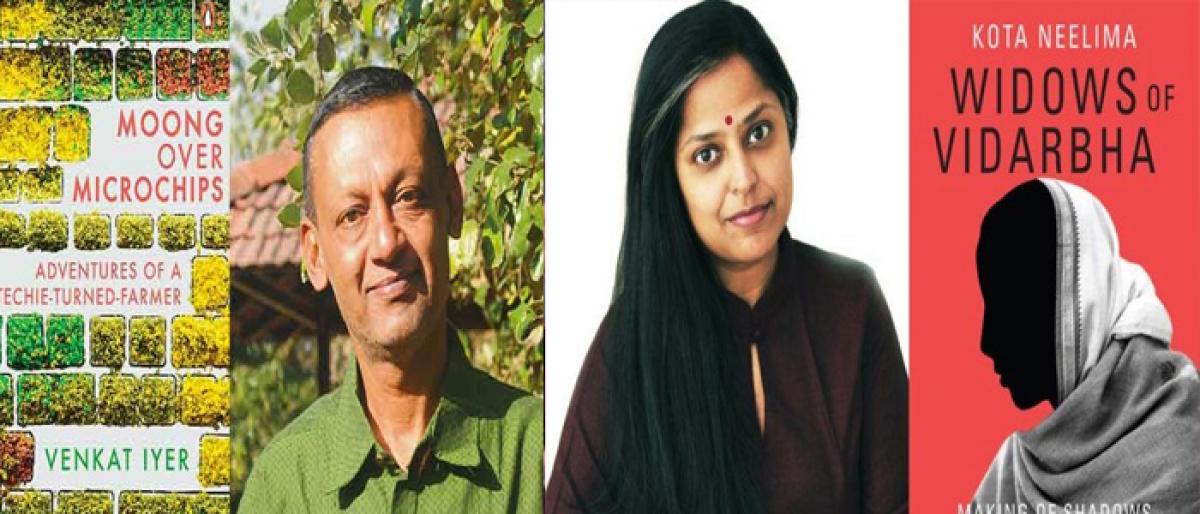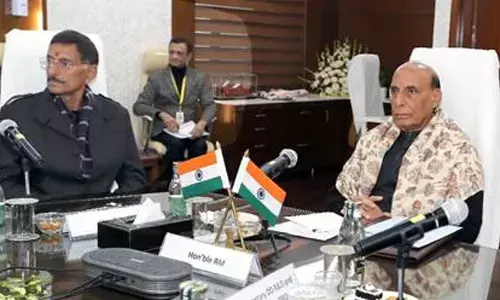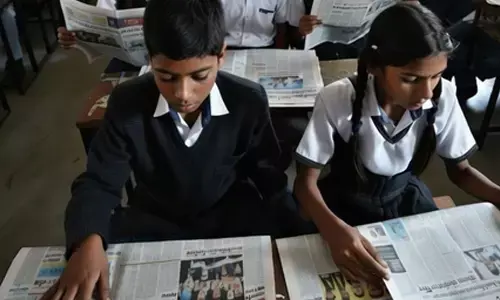Focusing on hinterlands

What with farmers\' suicides and protests, there is currently a lot of talk about an agrarian crisis – as well as a renewed interest in lives lived in the hinterland. So, how are the writers of our times responding to this?
What with farmers' suicides and protests, there is currently a lot of talk about an agrarian crisis – as well as a renewed interest in lives lived in the hinterland. So, how are the writers of our times responding to this?
Non-fiction writers have expounded at length on a variety of issues, the combination of which, according to them, has led to the crisis that rural India is currently facing. The negligence of the agricultural sector by the state and the rise of crony capitalism, among others, are the major issues that dominate these scholarly offerings.
Recent books like ‘Moong over Microchips’ by Venkat Iyer (Penguin), that charts the transformation of an urban techie into a rural farmer, or ‘Widows of Vidarbha’ by Kota Neelima (Oxford University Press), which tells the story of 16 farm widows who have been invisible to the state, the community, and even their families, and talks of their lost dreams, their diminished worldviews, and their helpless surrender to the conveniences of patriarchy, have focused on the plight of the farmer.
At the same time, there have been books like ‘India in Love’ by Ira Trivedi (Aleph), which, even while providing a ground-breaking look at the sexual revolution that is sweeping through urban India, points to the gradual transformation of ethos in rural India. The book contends that the entire concept of marriage and sexuality is undergoing a massive transformation, not just in our cities but also in smaller towns and villages.
But, bound as they are by an invisible "non-fiction contract", the writers of such accounts are faced with the grave challenge of narrating their tales while strictly obeying all rules that the genre lays down.
However, there are no such rules for fiction. And novelists paint pictures that reportage doesn't even come close to. Consider, for instance, characters from Arundhati Roy's second novel ‘The Ministry of Utmost Happiness’. Even as they live in their small little worlds, their lives are torn apart by text messages of real-estate advertisements that come into their phones. The world is changing and the tales of the changing times are best narrated through fiction.
"I do not think people in urban India are aware of the agrarian crisis or the extent of it," Roy, an award-winning writer and activist, said. She pointed out that the public discourse has changed so much that our attention is caught in "criminal emergencies", leaving us with little time to ponder the lives of others.
And then there are the likes of Mark Tully, the former BBC journalist and writer of evergreen books such as ‘India in Slow Motion’. In a collection of short stories titled ‘UpCountry Tales’ Tully weaves little instances of corruption and red tapism, how an innocent poor servant is convicted of a crime that his master committed and so on. Presenting life in its totality is a rare window that, perhaps, fiction opens better than all other genres – poetry, of course, is a different matter altogether.
Even in fiction, one would argue, the most original stories are those that come from Indian languages. These writers are lifelong companions of country life and having sailed through the pleasures and pains of our hinterland, their stories stand out from the books that generally dominate the front shelves of leading bookstores.
Thankfully, translations are bridging this gap – and perhaps the first contemporary writer that comes to mind in this context is Perumal Murugan, who was once hounded for hurting religious sentiments, went into a self-imposed exile from writing, and then, fearful of writing about gods and humans, turned towards goats in his latest novel ‘Poonachi, or the Story of a Black Goat’.
"The odds," Perumal had contended about rural life in an earlier interview, "are many." But, he said, the suggestion that odds exist only in rural settings is misplaced and reflects a certain lack of awareness.
"Whenever we call farmers poor and judge their lives, it is from the perspective of a new kind of life that is emerging in the cities – in the clothes we wear, the food we eat.
"Comparatively, it might seem that they are suffering from poverty; but as far as I have seen and understood, agriculture is not a profession – it is a way of life. It is something you live and breathe every day. I have always felt that it is a very fulfilling life and there is never a sense of something missing in the village. I was yearning for nothing," he had added.
Murugan's perspective is a striking contradiction of Roy's views and contradictions are indeed the lifeblood of literature. The more stories we have, the more views we will have – but one thing that seems evident is an increasing focus on the hinterland in themes of both non-fiction and fiction offerings of our times.
















